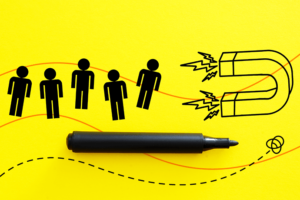
Public-Private Collaboration: Is It The Future Of Education?

Why Public-Private Collaboration Matters In Education
AI, automation, and digital technology are shifting the skills modern employees need to succeed. However, education systems often struggle to keep up. Traditional education relies on fixed curricula that are difficult to change, or when they do, the changes are slow. This leaves students unprepared for the job market. The gap between what graduates learn and what employers want leads to a growing skills gap. Global issues like underfunded schools, unequal access to technology, and limited opportunities for lifelong learning make the situation worse. While governments are able to provide infrastructure and regulations, they need help to address these problems. This is where public-private collaboration is important. When schools, universities, EdTech companies, and businesses work together, education becomes more flexible and adaptable to change. Governments ensure stability and oversight, while private partners add innovation, resources, and expertise to improve classrooms.
This teamwork helps update curricula faster, ensures students have access to the latest technology, and connects learning to real-world applications. Businesses also benefit from this partnership, as they develop a better-prepared workforce and enhance their reputations. Below, we will dive into how public-private collaboration can positively impact education and what it takes for this collaboration to be fruitful.
5 Ways Public-Private Collaboration Transforms Education
1. Skills Training
Public-private partnerships are transforming education, especially in curriculum development and skills training. For years, schools and universities have focused on traditional subjects. However, these subjects alone do not prepare students for future jobs. Employers seek workers with digital skills, knowledge of AI, and an understanding of sustainability, which are often lacking in traditional classrooms.
Businesses can help fill this gap. By collaborating with educators, companies can share what skills they need in new hires. This allows schools to adjust their programs so that students gain both practical job skills and academic knowledge. For instance, many tech companies are working with schools to design coding and STEM programs. These partnerships make learning more relevant and engaging, as they connect to real job opportunities. Teachers also benefit by gaining access to current resources and training. Therefore, it’s a win-win situation for everyone: students enter the workforce feeling confident and skilled, while businesses find talent that meets their needs.
2. Infrastructure And Technology Enhancement
One of the most powerful areas where public-private collaboration improves education is infrastructure and technology. Without the right foundations, such as buildings, internet access, devices, or even safe classrooms, it’s nearly impossible for students to learn effectively. Unfortunately, many public schools worldwide still struggle with outdated facilities, overcrowded classrooms, and limited access to technology. Governments often face budget limitations or fail to prioritize them, which means infrastructure upgrades take years to happen. This is where private companies can make a real difference.
For example, telecom providers have partnered with schools to expand internet access in rural or underserved areas. Similarly, tech companies donate laptops, tablets, and learning platforms. Even businesses help by building modern classrooms, science labs, and libraries. These partnerships not only speed up improvements but also ensure that education is aligned with the modern world. This benefits everyone. Students gain access to better facilities and resources, teachers can deliver lessons more effectively, and companies strengthen their role in shaping future talent.
3. Innovation And Knowledge Sharing
Governments and schools work to educate millions, but can be slow to try new methods. Private companies, especially those in technology and business, often move faster. They continuously experiment with tools and find new ways to solve problems, so when schools and companies collaborate, fresh ideas can reach classrooms more quickly. For instance, tech companies can share their expertise in AI, coding, or data analysis, while schools can explain what students need and how teachers can support them. This exchange of information keeps education relevant and aligned with industry trends.
Innovation isn’t just about technology, though. It can also involve new teaching methods, better assessment methods, or more inclusive and engaging learning experiences. By partnering with private companies, schools can test new ideas first, which lowers risk while still encouraging progress. Sharing knowledge also helps both sides understand each other better: business leaders learn about educational challenges, while educators see what skills future workers will need.
4. Financing
When discussing the future of education, one significant challenge is funding. Schools and universities often have tight budgets, which leads to outdated resources, underpaid teachers, and students missing out on chances to really prepare for the future. Public-private partnerships can help solve this problem. Governments provide the basics, such as infrastructure and funding, but private companies can offer more support and new ideas.
For example, businesses might pay for modern labs, donate laptops or tablets, or sponsor scholarship programs for disadvantaged students. To be more specific, in some places, banks have partnered with schools to create financial literacy programs, while tech companies have helped bring digital learning to rural areas. When businesses invest in education, they are not just giving. They are also building the future workforce that will drive their industries.
5. Equity And Access
We need to ensure that every student, regardless of their background or circumstances, has a fair chance to succeed. Public-private collaboration plays a crucial role in this. Governments can create policies and provide funding to help underserved communities, but private companies bring tools, technology, and innovative solutions that make education more accessible. Nonprofits and businesses also contribute by providing scholarships, mentorship programs, and online resources that help students who might otherwise struggle.
Collaboration can also close the digital divide. By working together, telecom providers, governments, and schools have connected more households, ensuring that students do not miss out due to their location or family income. This also includes special programs for marginalized groups, such as girls in STEM or adults needing new job skills, often funded by both public and private sectors. Ultimately, equity and access in education are about fairness and building stronger, more inclusive societies. When everyone has the chance to learn, more people can share their skills and ideas.
What Successful Collaboration Looks Like
When we talk about public-private collaboration in education, we often think of big donations or governments starting new training programs. However, true success in these partnerships is not just about one-time contributions. It’s really about how both sides collaborate over time. When you look at successful public-private collaborations in education, you’ll notice they share these four traits:
- A shared vision that keeps everyone in the same direction.
- Transparent governance that ensures trust and fairness.
- Scalability and inclusivity that allow projects to reach more people without excluding anyone.
- Long-term sustainability that keeps the impact alive for years to come.
All of these elements depend on each other. A partnership can have a common goal, but without transparency, people will lose trust. A project might grow quickly, but if it is not inclusive, it can increase inequality. A program can be inclusive, but if it lacks sustainability, it will end too soon. Real change happens when all of these elements come together. That is when collaboration becomes powerful enough to cause improvement.
Conclusion
Public-private collaboration is essential for preparing students and workers for the future. Schools, governments, or businesses can’t do this alone. Education involves more than just providing students with the necessary skills for their future careers. It also helps shape people’s critical thinking skills and adaptability so they can effectively contribute to society. When the public and private sectors work together, they create better opportunities, fairer access, and an educational system that keeps up with future changes.
Source link



